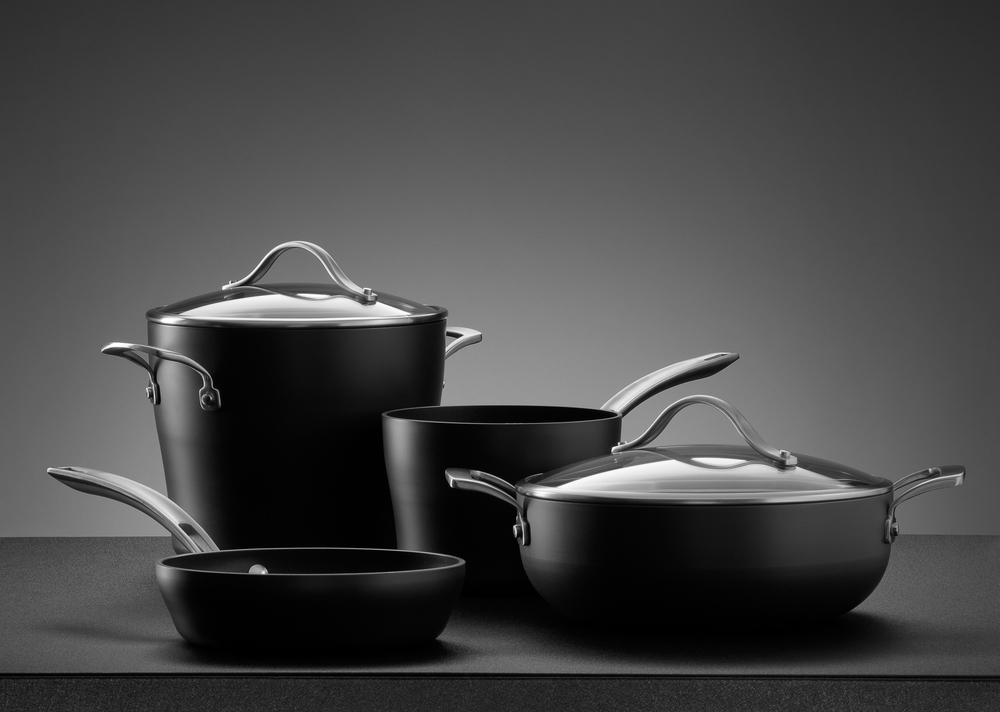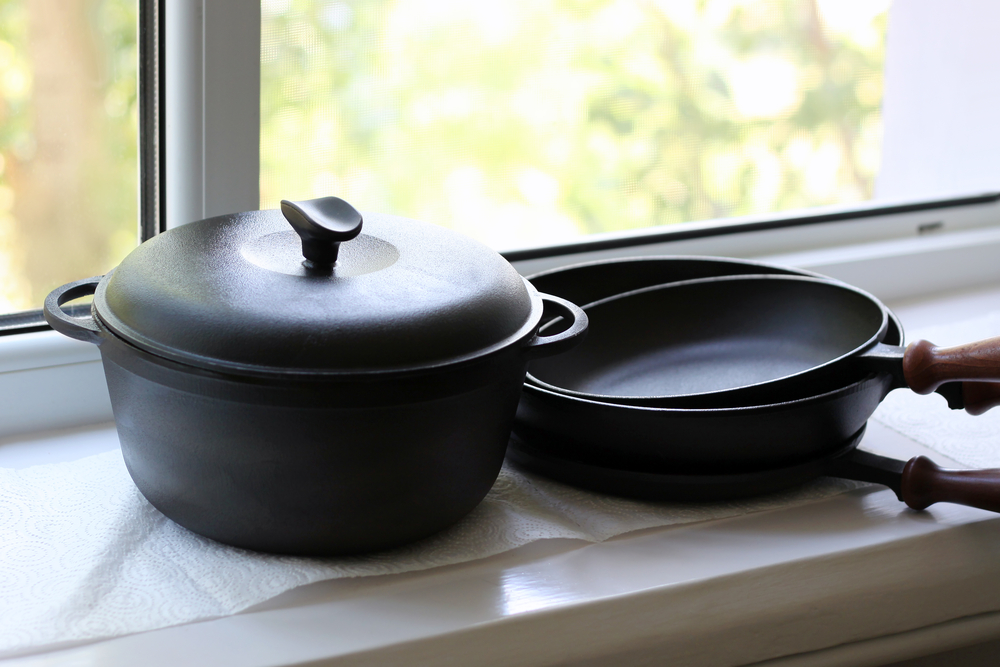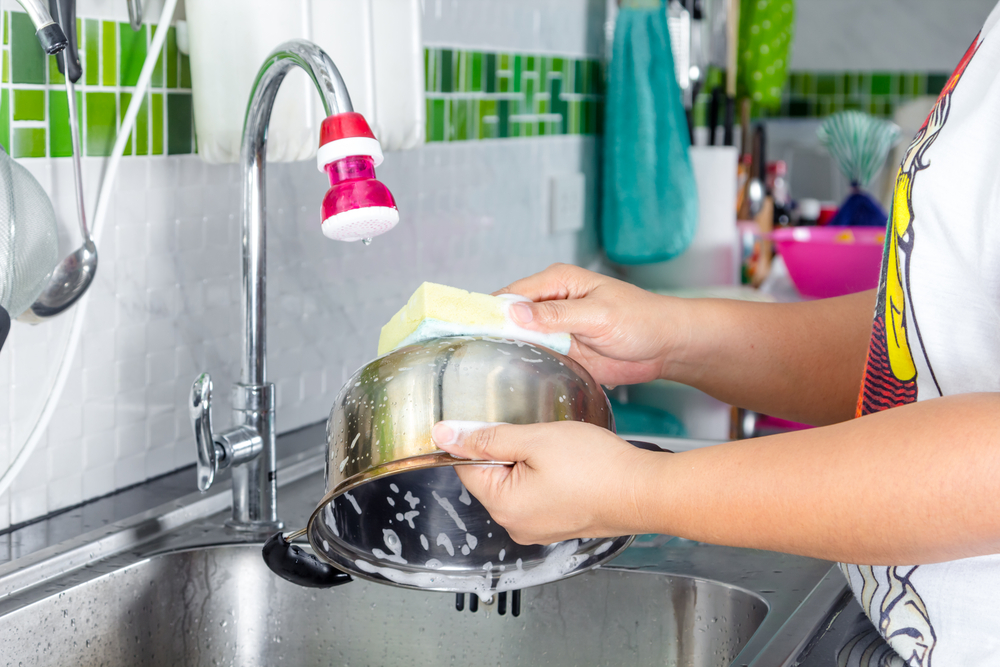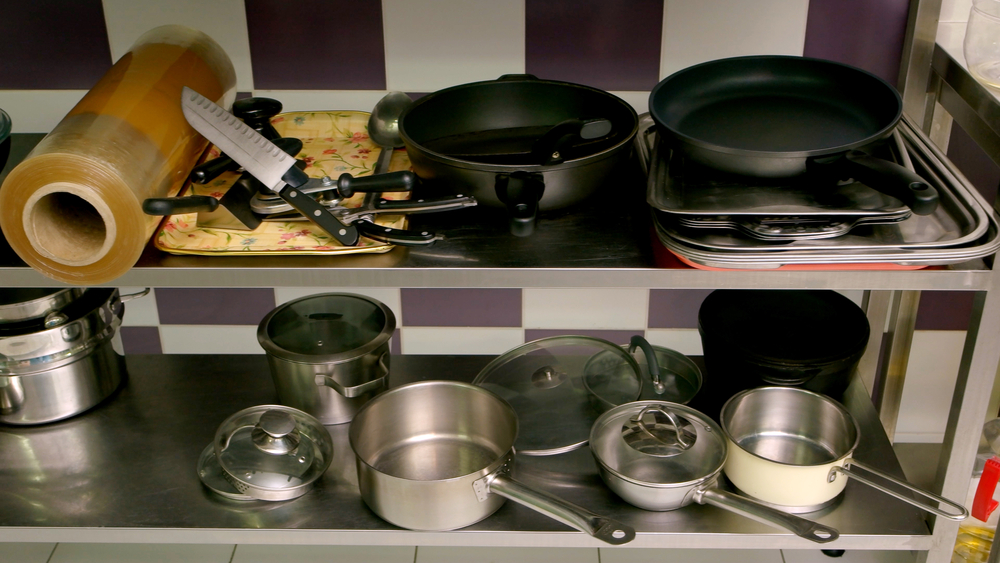When it comes to cooking, choosing the right cookware can make all the difference. Two popular options for sautéing and stir-frying are the sauté pan and the wok.
While both are versatile and can be used for a variety of dishes, they have distinct differences that can impact your cooking experience.
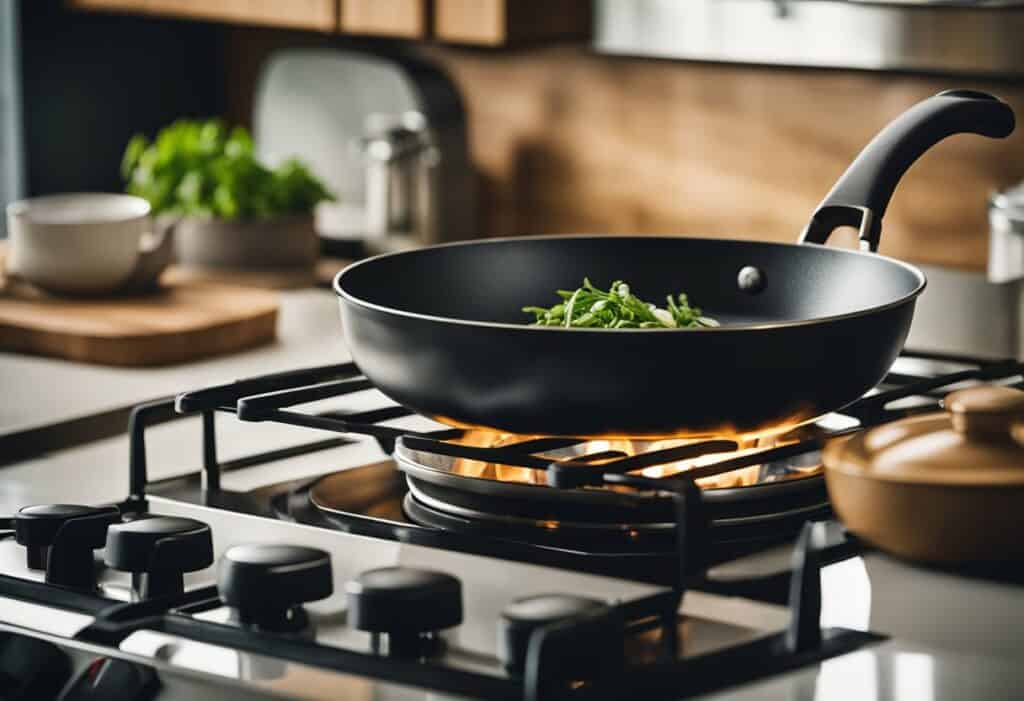
Understanding the basics of each cookware is the first step in determining which one is right for you. A sauté pan is a shallow, straight-sided pan with a lid, while a wok is a round-bottomed pan with high, sloping sides.
The shape of the pan can impact how heat is distributed and how the food is cooked. Additionally, the materials used to make the pans can vary, which can also impact cooking performance.
Saute Pan vs Wok: What are the key differences? In this article, I will compare and contrast the sauté pan and wok, including material comparison, cooking techniques, specific uses, and pros and cons.
By the end of the article, you will have a better understanding of which cookware is best suited for your cooking needs.
Key Takeaways
- Understanding the differences between a sauté pan and wok can impact your cooking experience.
- The shape and materials used in the pans can affect how heat is distributed and how food is cooked.
- Knowing the pros and cons of each cookware can help you determine which one is best suited for your cooking needs.
Understanding the Basics
When it comes to cooking, having the right cookware is essential. Two popular options for cooking pans are the sauté pan and wok.
While they may look similar, there are some key differences between the two that can affect the outcome of your dishes.
What is a Saute Pan?
A sauté pan is a flat-bottomed pan with straight sides and a long handle. It is typically made of materials such as stainless steel, aluminum, or copper.
This type of pan is great for cooking dishes that require high heat, such as searing meats or sautéing vegetables. It can also be used for making sauces or simmering dishes.
What is a Wok?
A wok, on the other hand, is a versatile cooking pan that originated in China. It has a unique rounded shape and sloped sides that make it perfect for stir-frying, steaming, sautéing, and even deep-frying.
Woks are typically made of materials such as carbon steel or cast iron.
Differences in Shape and Size
One of the most significant differences between a sauté pan and a wok is their shape and size. A sauté pan has straight sides and a flat bottom, while a wok has a rounded shape and a sloped bottom.
The sloped sides of a wok make it easier to stir-fry and toss ingredients, while the flat bottom of a sauté pan makes it more stable on a stovetop.
Woks are also generally larger than sauté pans, which makes them ideal for cooking larger dishes or meals.
However, sauté pans are great for cooking smaller dishes or meals and are more versatile in terms of the types of dishes they can be used for.
Handles and Materials
Another difference between sauté pans and woks is the handles and materials used to make them. Sauté pans typically have a long handle that is attached to the pan with rivets.
Woks, on the other hand, have two handles on either side of the pan that are used to lift and move the pan.
Sauté pans are typically made of materials such as stainless steel, aluminum, or copper. Woks, on the other hand, are typically made of carbon steel or cast iron.
Carbon steel woks are lightweight and easy to handle, while cast iron woks are more durable and can be used in the oven.
Conclusion
In summary, both sauté pans and woks have their own unique features and benefits. When deciding which one to use, consider the type of dish you are cooking, the size of the meal, and your personal cooking preferences.
Ultimately, having both a sauté pan and a wok in your cookware collection can give you the versatility and flexibility to cook a wide range of dishes.
Material Comparison
When it comes to choosing between a saute pan and a wok, the material of the cookware is an important factor to consider. The material affects the heat conduction, durability, and maintenance of the pan.
Carbon Steel
Carbon steel is a popular material for woks due to its excellent heat conduction and durability. It is also lightweight, making it easy to handle.
However, carbon steel requires seasoning to prevent rust and maintain its non-stick surface. Carbon steel woks are not suitable for cooking acidic foods as they can react with the metal and affect the taste.
Cast Iron
Cast iron is another durable material that is commonly used for both saute pans and woks. It has excellent heat retention and produces a great sear on food.
However, cast iron is heavy and requires seasoning to prevent rust. It is also not suitable for cooking acidic foods.
Stainless Steel
Stainless steel is a popular material for saute pans due to its durability and resistance to corrosion. It is also easy to clean and maintain.
However, stainless steel does not conduct heat as well as other materials, so it may take longer to heat up and cook food evenly.
Aluminum
Aluminum is a lightweight material that is commonly used for saute pans. It has excellent heat conduction and is affordable.
However, aluminum is not as durable as other materials and can warp over time. It is also prone to scratches and dents.
Enameled Cast Iron
Enameled cast iron is a durable material that is suitable for both saute pans and woks. It has excellent heat retention and is easy to clean. However, enameled cast iron is heavy and can be expensive.
Nonstick Coating
Nonstick coating is a popular option for saute pans as it prevents food from sticking and makes cleaning easier.
However, nonstick coating can scratch easily and is not suitable for high-heat cooking. It also requires special care to prevent the coating from peeling or flaking.
Overall, the choice of material for a saute pan or wok depends on personal preference and cooking needs.
Each material has its own advantages and disadvantages, so it is important to consider these factors before making a decision.
Cooking Techniques
When it comes to cooking techniques, both sauté pans and woks have their unique strengths.
For frying, sauté pans are ideal because they have a flat bottom that allows for even heat distribution. This makes them perfect for cooking foods that require a crispy finish, such as chicken cutlets or fish fillets.
The high sides of the sauté pan also make it easy to contain any splatters or oil.
On the other hand, woks are perfect for stir-frying because of their unique shape. The rounded bottom allows for food tossing, which is essential for stir-frying.
The high sides of the wok also make it easy to steam food, making it a versatile tool in the kitchen.
Sauté pans are great for sautéing because they have a larger surface area, which allows for more even cooking of food. They are also perfect for high-heat cooking, such as searing meat or vegetables.
Woks are great for deep-frying because of their unique shape. The rounded bottom allows for oil to be heated evenly, making it perfect for deep-frying foods like tempura or egg rolls.
Overall, both sauté pans and woks have their unique strengths when it comes to cooking techniques. It is important to choose the right tool for the job, depending on what you are cooking.
Specific Uses
When it comes to specific uses, both saute pans and woks have their own strengths and weaknesses. Here are some of the most common uses for each:
Saute Pan
Saute pans are great for cooking meat, vegetables, and fish. They are also perfect for making stir-fry dishes and casseroles.
The flat bottom of the pan allows for even heat distribution, which is essential for cooking delicate foods like fish and poultry.
One of the main advantages of a saute pan is its versatility. You can use it to cook almost anything, from sauteing vegetables to cooking meat.
Saute pans can also be used to make stews and casseroles, making them a great all-around kitchen tool.
Wok
Woks are primarily used in Asian cuisine and are perfect for making stir-fry dishes.
The unique shape of the wok allows for even heat distribution, which is essential for stir-frying. Woks are also great for cooking udon and other noodle dishes.
One of the main advantages of a wok is its ability to handle high heat. The sloped sides of the wok allow for food to be cooked quickly and evenly.
Woks are also great for avoiding spillage, as the high sides prevent food from falling out of the pan.
Overall, both saute pans and woks have their own specific uses. If you’re looking for a versatile kitchen tool that can be used for a variety of dishes, a saute pan is a great choice.
If you’re primarily interested in making stir-fry dishes and other Asian cuisine, a wok is the way to go.
Pros and Cons
When it comes to choosing between a sauté pan and a wok, there are pros and cons to both options. Understanding these can help you decide which one is right for you.
Sauté Pan Pros and Cons
Sauté pans are versatile and can be used for a variety of cooking methods, including sautéing, braising, and browning.
They have a large, flat bottom that makes them compatible with most cooktops. They also distribute heat evenly, making them ideal for cooking even-surfaced foods like meats and fish.
However, sauté pans can be heavy and difficult to maneuver, especially when filled with food. They also tend to be more expensive than woks.
Additionally, sauté pans may require more maintenance and care, as they can be more difficult to clean.
Wok Pros and Cons
Woks are known for their versatility and are primarily used for stir-frying, but they can also be used to steam or even bake food.
They get hotter faster, including the sides, which makes them ideal for cooking large batches of foods like stir-fries.
They are also lightweight and easy to maneuver, making them a great option for tossing and flipping food.
However, woks can be more difficult to use on certain cooktops, like electric or induction. They also have a rounded bottom, which can make them less stable and prone to tipping.
Additionally, woks are not ideal for cooking even-surfaced foods like meats and fish.
Conclusion
Ultimately, the choice between a sauté pan and a wok comes down to personal preference and the type of cooking you plan to do.
Sauté pans are ideal for even-surfaced foods and offer versatility, while woks are great for stir-frying and offer ease of use.
Consider your cooktop compatibility, heat distribution, utensil use, cleaning and maintenance, price, and storage needs when making your decision.
Saute Pan Vs Wok
As someone who enjoys cooking, I always find myself wondering which cookware to use for specific dishes. One common question I get is, “What is the difference between a saute pan and a wok?”
In short, the main difference between a saute pan and a wok is their shape.
A saute pan has a large, flat bottom, long handle, vertical sides, and a tight-fitting lid. On the other hand, a wok has tall, sloped sides and a rounded bottom.
While both saute pans and woks can be used for stir-frying, they are better suited for different types of dishes.
Sauté pans are primarily used for sautéing, braising, and browning food, while woks are mainly used for stir-frying.
Here is a comparison chart to help illustrate the differences between saute pans and woks:
| Saute Pan | Wok |
|---|---|
| Large, flat bottom | Rounded bottom |
| Long handle | Two small handles |
| Vertical sides | Tall, sloped sides |
| Tight-fitting lid | No lid |
| Primarily used for sautéing, braising, and browning food | Mainly used for stir-frying |
One advantage of using a saute pan is that it can hold more food than a wok without spilling. However, it can be harder to toss food in a saute pan compared to a wok.
Woks, on the other hand, are great for cooking food quickly at high temperatures and require less oil than saute pans. They are also versatile and can be used for steaming or even baking food.
When it comes to choosing between a saute pan and a wok, it ultimately depends on what type of dish you are making.
If you are making a stir-fry, a wok is the way to go. If you are sautéing or braising food, a saute pan is the better option.
Overall, having both a saute pan and a wok in your cookware range can be beneficial, as they each have their own unique uses.
Additional Considerations
When choosing between a sauté pan and a wok, there are a few additional considerations to keep in mind.
Seasoning
Woks need to be seasoned before use to prevent food from sticking and to create a non-stick surface.
This involves coating the wok with oil and heating it over high heat until it becomes dark and shiny. Sauté pans, on the other hand, do not require seasoning.
Wok Ring
If you plan on using a wok on a gas stove, you may need a wok ring to keep it stable. A wok ring is a metal ring that sits on top of the burner and supports the wok.
Some woks come with a flat bottom that can sit directly on the burner, eliminating the need for a wok ring.
Dutch Oven
If you are looking for a versatile cooking vessel that can be used for a variety of cooking methods, a Dutch oven may be a good choice.
Dutch ovens have a wide, flat bottom and high sides, making them ideal for sautéing, braising, and even baking. They can also be used on both gas and electric stovetops.
Lid
Sauté pans usually come with a tight-fitting lid, which can be useful for simmering and steaming food. Woks, on the other hand, do not typically come with a lid.
If you plan on steaming food in your wok, you may need to purchase a separate lid or use a plate to cover the wok.
Overall, when choosing between a sauté pan and a wok, it is important to consider your cooking needs and preferences.
Both types of cookware have their own unique advantages and disadvantages, and the right choice will depend on factors such as the type of food you plan on cooking and the type of stove you have.
Frequently Asked Questions

What is the difference between a sauté pan and a wok?
A sauté pan is a shallow, straight-sided pan that is typically used for cooking food at high temperatures. A wok, on the other hand, is a deep, rounded pan that is used primarily for stir-frying.
The main difference between the two is the shape of the pan.
The sloping sides of the wok allow for food to be easily moved around and cooked quickly, while the straight sides of the sauté pan are better suited for cooking food that requires more liquid.
Can a sauté pan be used for stir fry?
While a sauté pan can be used for stir-frying, it is not the best option. The straight sides of the pan make it difficult to toss and move the food around, which can result in uneven cooking.
Additionally, the lack of a rounded bottom can cause food to stick and burn.
Why use a wok instead of a pan?
A wok is a versatile cooking tool that can be used for a variety of cooking techniques, including stir-frying, steaming, and deep-frying.
The unique shape of the wok allows for food to be easily moved around and cooked quickly, while the rounded bottom ensures that food cooks evenly and doesn’t stick to the pan.
Additionally, the high sides of the wok make it easy to cook large quantities of food.
What are the benefits of using a wok?
Using a wok has several benefits. The unique shape of the pan allows for food to be easily moved around and cooked quickly, which can result in more evenly cooked and flavorful dishes.
The rounded bottom of the wok ensures that food cooks evenly and doesn’t stick to the pan. Additionally, the high sides of the wok make it easy to cook large quantities of food.
What is the best material for a wok?
The best material for a wok is carbon steel. Carbon steel heats quickly and evenly, which is important for stir-frying. Additionally, carbon steel woks are durable and can last for years with proper care.
What are the advantages of using a stainless steel wok?
Stainless steel woks are durable and easy to clean, making them a good choice for home cooks. Additionally, stainless steel is non-reactive, which means that it won’t react with acidic ingredients like tomatoes or vinegar.
However, stainless steel doesn’t heat as quickly or evenly as carbon steel, which can make it more difficult to stir-fry.


